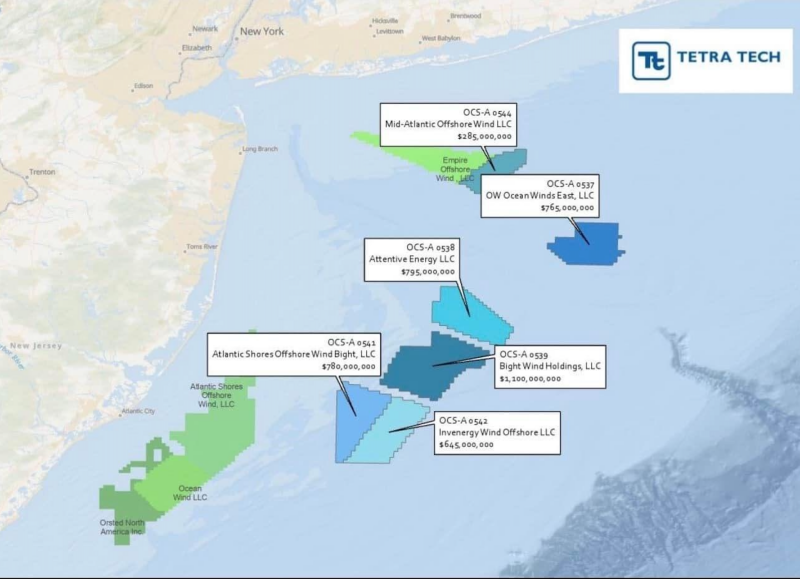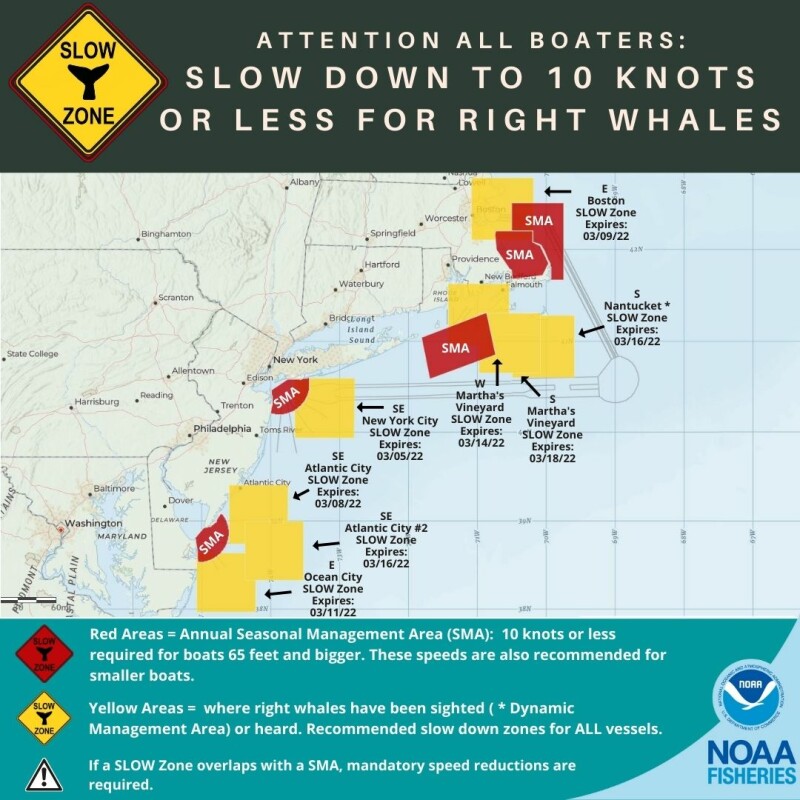It’s estimated that nearly 30 geophysical surveys now authorized by NMFS for East Coast offshore wind projects could result in as many as 109,000 harassment events for marine mammals, including a projected 243 incidents that could affect the critically endangered north Atlantic right whale.
That shows the need to “avoid, minimize, and mitigate threats that offshore wind development also poses to vulnerable ocean life,” according to the Natural Resources Defense Council, long an advocate for developing renewable energy sources including offshore wind.
The NRDC signed up to recently A 10-page statement together with other environmental groups – including the Conservation Law Foundation, Defenders of Wildlife, National Wildlife Federation, NY4WHALES, the Southern Environmental Law Center and Whale and Dolphin Conservation.
The document is titled “Strong Mitigation Measures Are Essential to Protect the North Atlantic Right Whale During All Phases of Offshore Wind Energy Development.” It distills growing concerns among environmental groups, always supportive of renewable energy, that offshore wind development carries risk too.
“The seriously imperiled status of the North Atlantic right whale demands the implementation of the most stringent measures to safeguard this species during site assessment, construction, operations, and decommissioning of offshore wind energy projects,” the paper declares. “Risks from vessel collision and direct and indirect noise impacts on right whales, including potential habitat displacement that may exacerbate existing threats, need to be fully addressed from the start.
“Strong right whale protections are required to fulfill federal legal requirements for protecting marine mammals and endangered species4 and will ensure we can achieve the (Biden) administration’s commitment to deploy 30 gigawatts of offshore wind energy by 2030 while protecting biodiversity, cultural resources, and ocean uses.”
Online posting March 4,, NRDC senior scientist Francine Kershaw wrote “we need offshore wind, and we need to do it right.”
The environmental groups are calling on NMFS and the Bureau of Ocean Energy Management to follow a policy of ‘mitigation hierarchy’ as prescribed in the National Environmental Policy Act.
That’s very close to the position that’s being taken by commercial fishing advocates, such as the Responsible Offshore Development Alliance, who argue NEPA principles have been sidelined in the federal government’s push for wind development.
BOEM and NMFS are obligated by law to do all they can to protect marine mammals, and “the agencies should follow the principles of the mitigation hierarchy and avoid, minimize, and mitigate impacts,” Kershaw wrote.
“Proven mitigation measures must be used to reduce impacts, including restricting vessel speeds to 10 knots or less to reduce the likelihood of vessel collisions, and new technologies to detect marine mammals and reduce noise emitted by the survey equipment should be used as they become available,” according to Kershaw. “The permitting process should be adaptable to reduce risks that may be identified in the future as more information on species and offshore wind development is available.”
BOEM planners, wind developers and architects say that such strategies are being included into construction and operation plans. But the environmental groups’ statement is one more sign of growing caution as the extent of BOEM’s offshore wind proposals grows.
In May 2021 Similar doubts were raised by NRDCBOEM and California state officials, to plan for future arrays floating anchored turbines.
On the East Coast, the first two fully permitted projects in federal waters, Vineyard Wind and South Fork Wind off southern New England, and BOEM’s record-setting $4.37 billion sale of wind leases in the New York Bight, lie in waters frequented by a right whale population estimated at less than 340 animals.

Ocean activists are concerned about new leases further offshore, as wind turbine arrays have been planned for the New Jersey coast.
“The ocean is far more valuable as an ecosystem, so we must minimize industrialization and be sure it is protective of marine life,” said Cindy Zipf, the executive director of Clean Ocean Action, a New Jersey-based group that successfully fought pollution and ocean dumping out of New York Harbor.
The group says it “supports responsible and reasonable offshore wind energy,” but called BOEM’s massive Bight lease offering “a reckless privatization, and will not ensure protection of marine life including whales, dolphins, turtles and the hundreds of other species that call the ocean home.”
NMFS issued advisories requesting that mariners observe right whales in areas marked for wind energy development in the Northeast and Mid-Atlantic waters during the first week of March 2022.

“Offshore wind will help eliminate dangerous greenhouse gas emissions, promising healthier air as well as thousands of well-paying clean energy jobs,” wrote Kershaw of NRDC. “But as we fight climate change, we can and must avoid, minimize, and mitigate threats that offshore wind development also poses to vulnerable ocean life.”
Kershaw was particularly concerned with the potential impacts of acoustic surveys that are used to map and prepare for wind energy development.
“Some of the soundwaves used in geophysical surveys overlap with frequencies for marine mammal hearing, meaning they can be detected by these animals,” Kershaw wrote. “Noise exposure from geophysical surveys has the potential to damage the hearing and sensory abilities of some species if they are close to the source of the sound when it occurs.”
Another hazard is vessel collisions – a particular danger for right whales that travel and feed at the surface in low profile difficult for mariners to spot. According to whale researchers, vessel strikes are a major cause of right whale decline.
According to NRDC the survey will allow approximately 6,300 days of geophysical activity using NMFS permits. The group proposes steps to reduce the hazard along the East Coast as well as similar measures to allow early planning now on both the West Coast of Mexico and the Gulf of Mexico.
– Seasonal or temporal restrictions: Surveys should be avoided in vital habitat areas all year, or for migratory animals, during months of high usage. When marine mammal presence is sufficiently monitored, surveys must be started only during good visibility (daylight, clear weather conditions).
– Observation & detection: Visual observers and passive acoustic monitoring should be used before and during noise-producing activity. These monitors can be used to detect and locate marine mammals, and activate a shutdown when they are detected. Also, thermal detection cameras are recommended for activities that go beyond the normal light hours.
– Vessel speed limits: To reduce the risk of collisions during surveys or transiting between survey areas, vessels must maintain speeds of at least 10 knots.
“These fundamental requirements are necessary to protect the critically endangered North Atlantic right whale from potential impacts posed by offshore wind energy site assessment and characterization work,” Kershaw wrote. “Many of these measures offer important benefits to other marine mammal species and sea turtles.”

